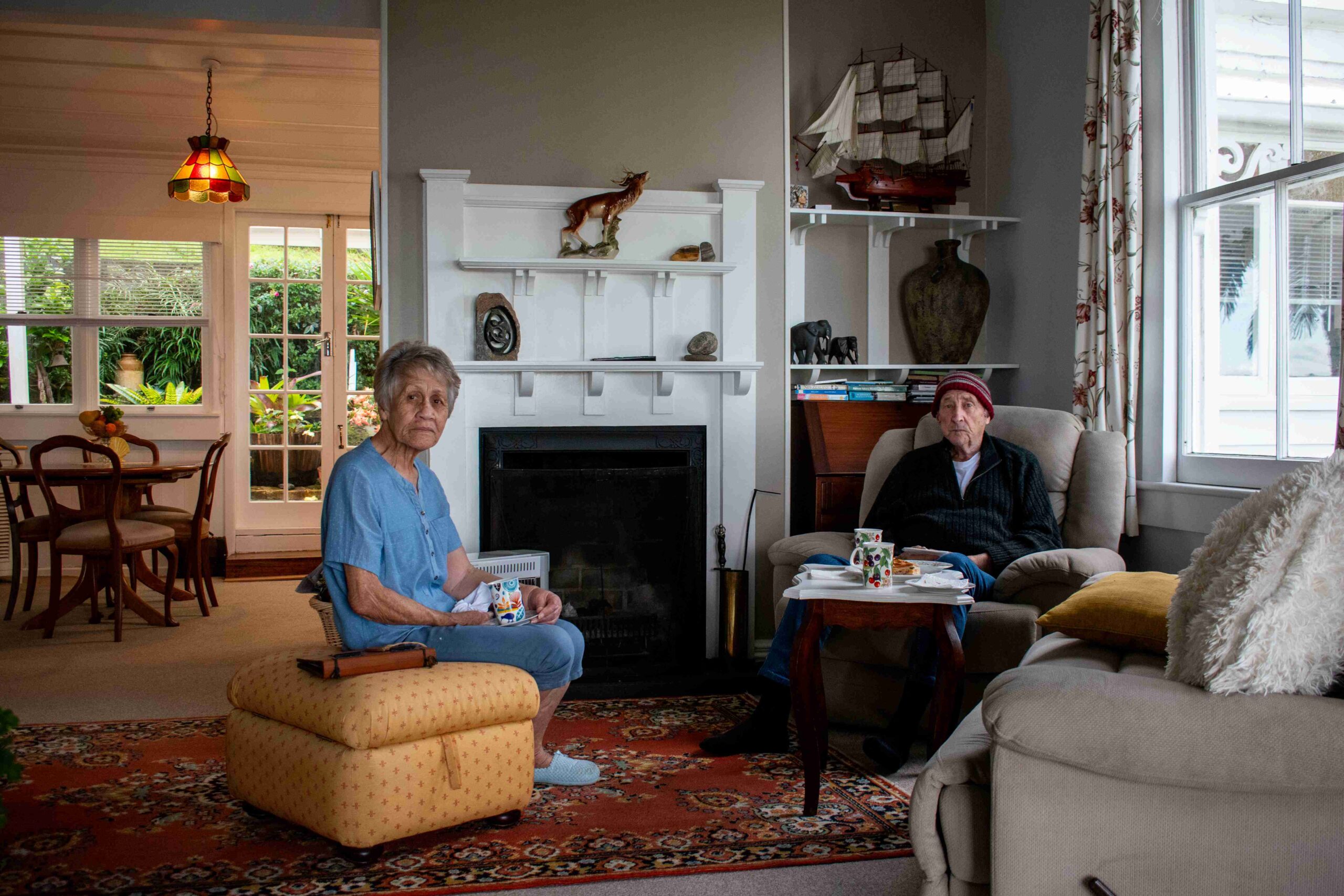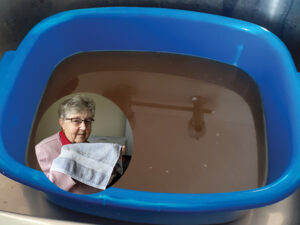Continuing our look into life for those with red-stickered homes, reporter ALICE PARMINTER speaks with a couple struggling to sell their red-stickered Kuranui Bay property.
Nelly Morrison hates the red sticker adorning her home.
For 25 years, the little cottage in Kuranui Bay next to the dairy has been a sanctuary for Nelly and her husband Jack. It’s got views of the sea, it’s close to the hospital, they know everyone in their little community. But that red sticker, acquired after the February 2023 storms, is a symbol of the stress and hardships the elderly couple have faced since.
“The problems that evolved through having that red sticker, from start to where we are now… I think I’ve aged 10 years,” Nelly said.
The problems began one morning in February, 2023, at around six a.m. Nelly was having trouble sleeping after radiation treatment for her cancer, so she was up early.
“I was standing there ironing. Then I saw this crack,” she said.
“It came right across the bottom of the door there – it was just going along as I was ironing. I thought, my goodness, I think I’ve had too much medication.”
Immense amounts of water had come down the cliff behind the house, they were told later. With nowhere to drain, it pooled under the building.
“The floorboards heaved up. It was really uncanny. I carried on ironing, and then the next thing the carpet rolled up in that corner.”
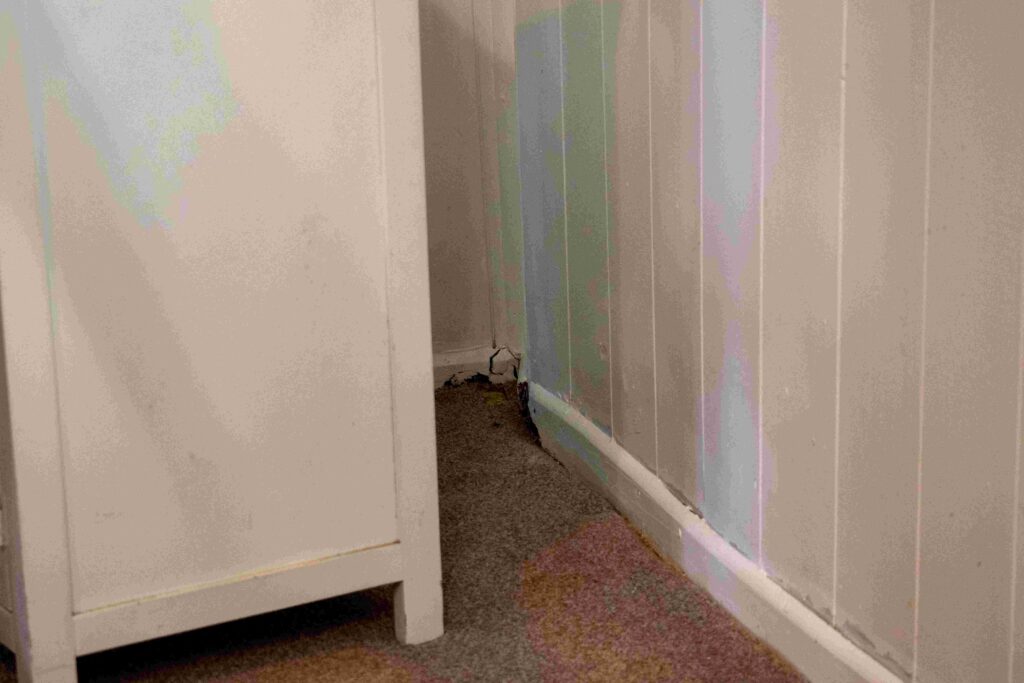
Nelly woke Jack and they called Civil Defence. Within minutes, she said, there was a group of people standing on the road outside their home.
“We had Civil Defence, we had fire brigade, we had [the Earthquake Commission], we had council people. And they were all across the road, standing there with their hands in their pockets… Looking up towards the hill,” Nelly said.
“I thought, what are they doing? Nobody actually came in to see us. And then the next thing, a guy got out.
“[He] came running in with the red tape and put it all on, and somebody was slapping up a red sticker on the door. And then two guys came in with their dirty filthy gumboots, just walked straight through the house and said, It’s time for you to get out… It’s dangerous. The hill up there might slip down.”
The couple were sent to a hotel on Rolleston St in Thames. It was nice enough, Nelly said, but they just wanted to get back home. Meanwhile, there were new problems at their property.
“For nine months, our house went to the pack – we had rats coming up through the hole in the wall there, and you could smell that,” Nelly said.
“[Someone] burgled the house while it was empty, took all [my] cancer pills… It was awful. I was angry. And then [Jack] had a stroke.”
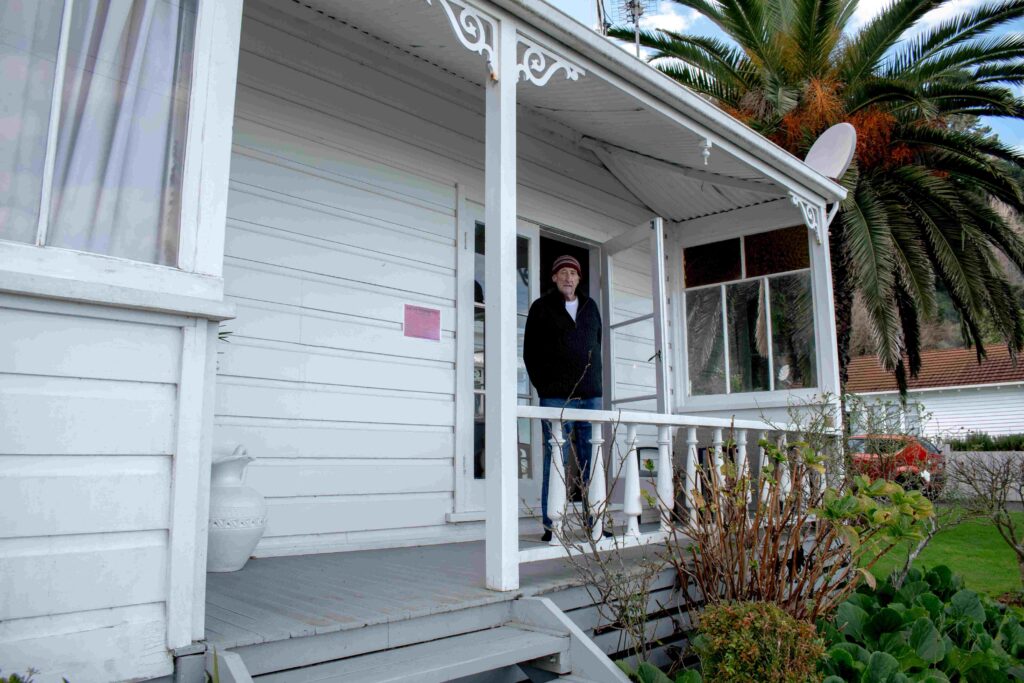
Eventually, Nelly said, her son convinced the council to let them move back in. But the family had had enough of the stress, and in March this year they decided to put the home on the market.
“Every corner we seemed to turn was costing a lot of money, but we had no solutions to fixing the wall and moving on. My daughter-in-law said to me, why don’t you try and sell it as-is? She rang and spoke to Steven [Bridson, at Harcourt Thames]. Well, you know, he’s just been an absolute blessing to us,” Nelly said.
“He’s turned up when he’s heard that there’s about to be a weather [warning] – he’s down here, checking all our pipes to make sure they’re not blocked up. He’s been a breath of fresh air.
“We’ve got a couple of people looking at [the property] now. But, you know, we’re still not able to make any progress because the people who are buying, they find it quite daunting when they see things like the wall.”
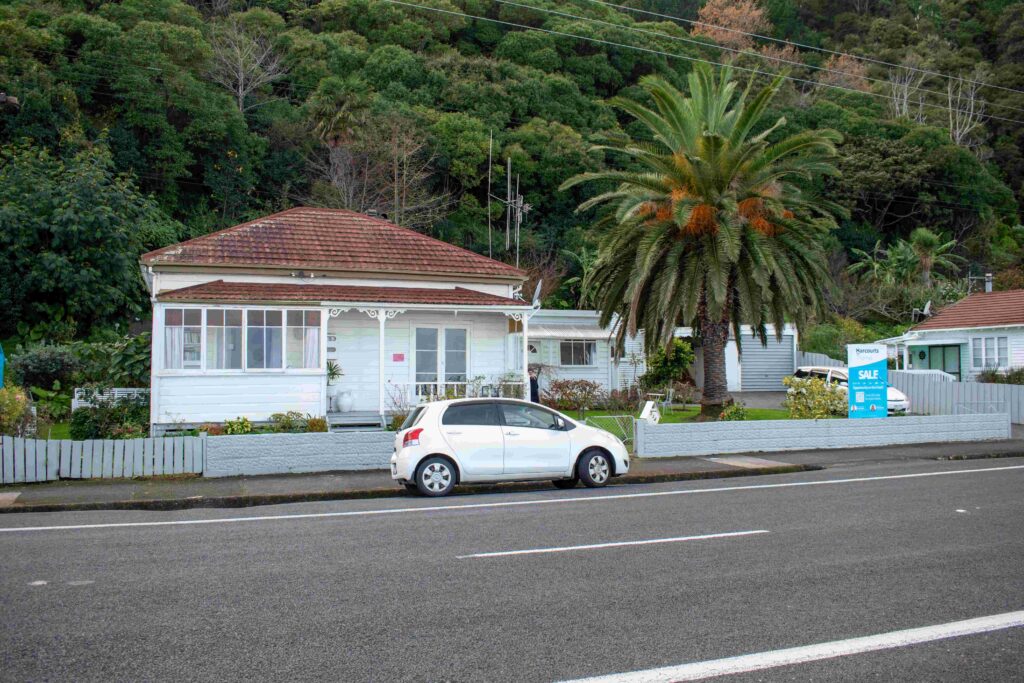
Steven said it was difficult to sell red- or yellow-stickered properties, with buyers wary and real estate agents expected to have some knowledge of the technical issues. Nelly and Jack’s home could have been worth $800,000, he said; now it’s on the market for $375,000.
“The boxes have to be ticked before that sticker can be removed – it’s going to be a mark on the property until that gets solved,” he said.
“We don’t really make any money off it [either] because a lot of time and effort goes into it and having to understand to a certain degree what the documents mean.”
But the opportunity was there for someone willing to do the remedial work, Steven said. He pointed to the sale of another red-stickered home he was involved with last year. The Thornton Bay home was damaged by a slip during the same storms and required demolition. It was sold as-is at a highly-publicised “$1 reserve” auction, eventually making $375,000.
Steven said he was aware of a few people on the Thames Coast who wanted to get away from red-stickered properties.
“I’ve sold one. I’ve got one on the market and I’ve been approached by three other people that are affected,” he said.
Meanwhile, Nelly and Jack have had multiple engineers and professionals look over their home since the storms.
The property itself has suffered only minimal damage. Water pressure during the storm made some of the piles unstable under the back corner of the house, and caused a few cosmetic issues inside. In the back garden, the cobblestones were heaved upwards, and one of the retaining walls in the terrace garden also moved. But the main concern, and the reason for the red sticker, was the possibility of further damage from slips and a lack of drainage.
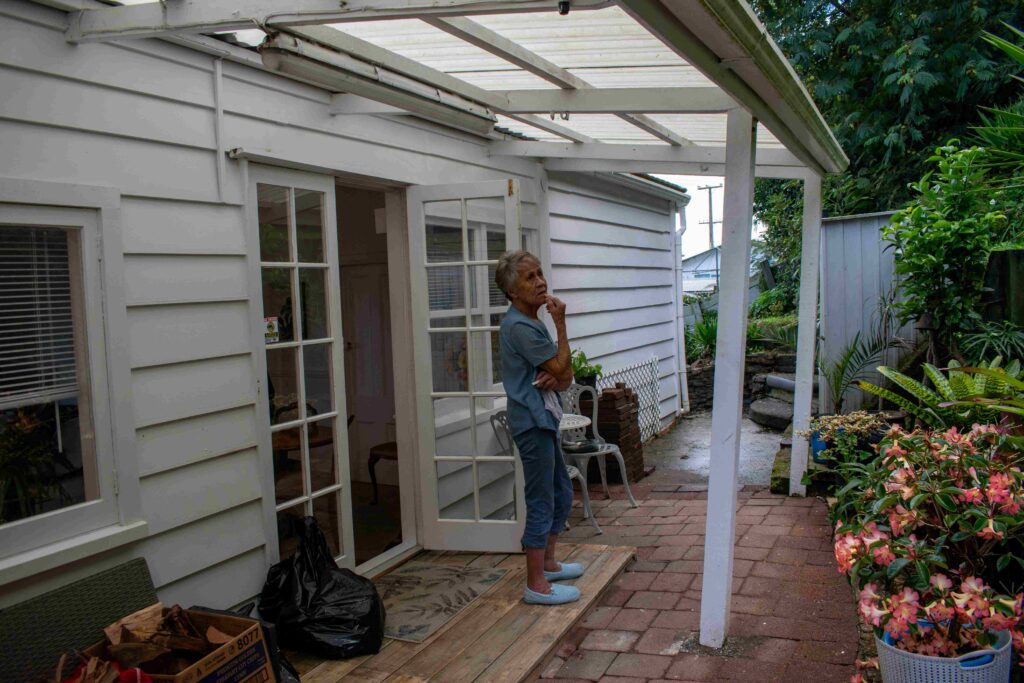
“The most traumatic part of it was for me, finding out that you’d been paying insurance all your life. Big insurance policies. You find out that you don’t even have enough to… cover just the retaining wall,” Nelly said.
“[And] we got a letter… Our insurance policy was cancelled because it’s red-stickered. So anybody that is buying the house, they’re going to find it difficult to get insurance until the retaining wall [is installed] or the red-sticker’s lifted.”
Their daughter-in-law, Samantha Morrison, has also spent hours on the phone to try and get the situation resolved.
“What the frustration has been for them throughout is that there’s nobody really to sit you down and say, ‘Look, this is step A, this is step B, this is step C’. They’ve been flying blind,” Samantha said.
“It feels like they’ve been fighting an uphill battle from the beginning… Looking at engineers and engineers reports and builders and then the council – it’s just – gosh, it’s a million different parties.”
The end is in sight though, Samantha said, with the house now on the market.
“It’s been a long road for them and it’s not nice for anybody to go through, I’m sure, but especially for them at their stage in life and with their health,” she said.
“We thought, well, this is a great place for our old age,” Nelly said.
“The feelings that go with this house – you know, you do get emotional about it.”

